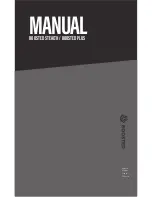
Setting Up
4-13
9161-A2-GH30-20
September 1997
Table 4-1.
Network Interface Options (7 of 7)
Excessive Error Rate Threshold
Possible Settings: 10E-4, 10E-5, 10E-6, 10E-7, 10E-8, 10E-9
Default Setting: 10E-4
Sets the error rate threshold that determines when an excessive error rate (EER)
condition is declared. The excessive error rate is determined by the ratio of the number
of CRC6 errors to the total number of bits received over a set period of time.
Excessive Error Rate Threshold only appears if Line Framing Format is set to
ESF.
10E-4 – Declares an EER if more than 1,535 CRC6 errors are detected in a 10-second
period. Clears when fewer than 1,536 CRC6 errors are detected within the same time
period.
10E-5 – Declares an EER if more than 921 CRC6 errors are detected in a 60-second
period or a 10
–4
condition occurs. Clears when fewer than 922 CRC6 errors are
detected within the same time period.
10E-6 – Declares an EER if more than 92 CRC6 errors are detected in a 60-second
period or a 10
–5
or 10
–4
condition occurs. Clears when fewer than 93 CRC6 errors are
detected within the same time period.
10E-7 – Declares an EER if more than 9 CRC6 errors are detected in a 60-second
period or a 10
–6
, or 10
–5
, or 10
–4
condition occurs. Clears when fewer than 10 CRC6
errors are detected within the same time period.
10E-8 – Declares an EER if more than 41 CRC6 errors are detected in three 15-minute
intervals or a 10
–7
, 10
–6
, 10
–5
, 10
–4
condition occurs. Clears when fewer than 42 CRC6
errors are detected within the same time period.
10E-9 – Declares an EER if more than 4 CRC6 errors are detected in three 15-minute
intervals or a 10
–8
, 10
–7
, 10
–6
, 10
–5
, or 10
–4
condition occurs. Clears when fewer than
5 CRC6 errors are detected within the same time period.
















































